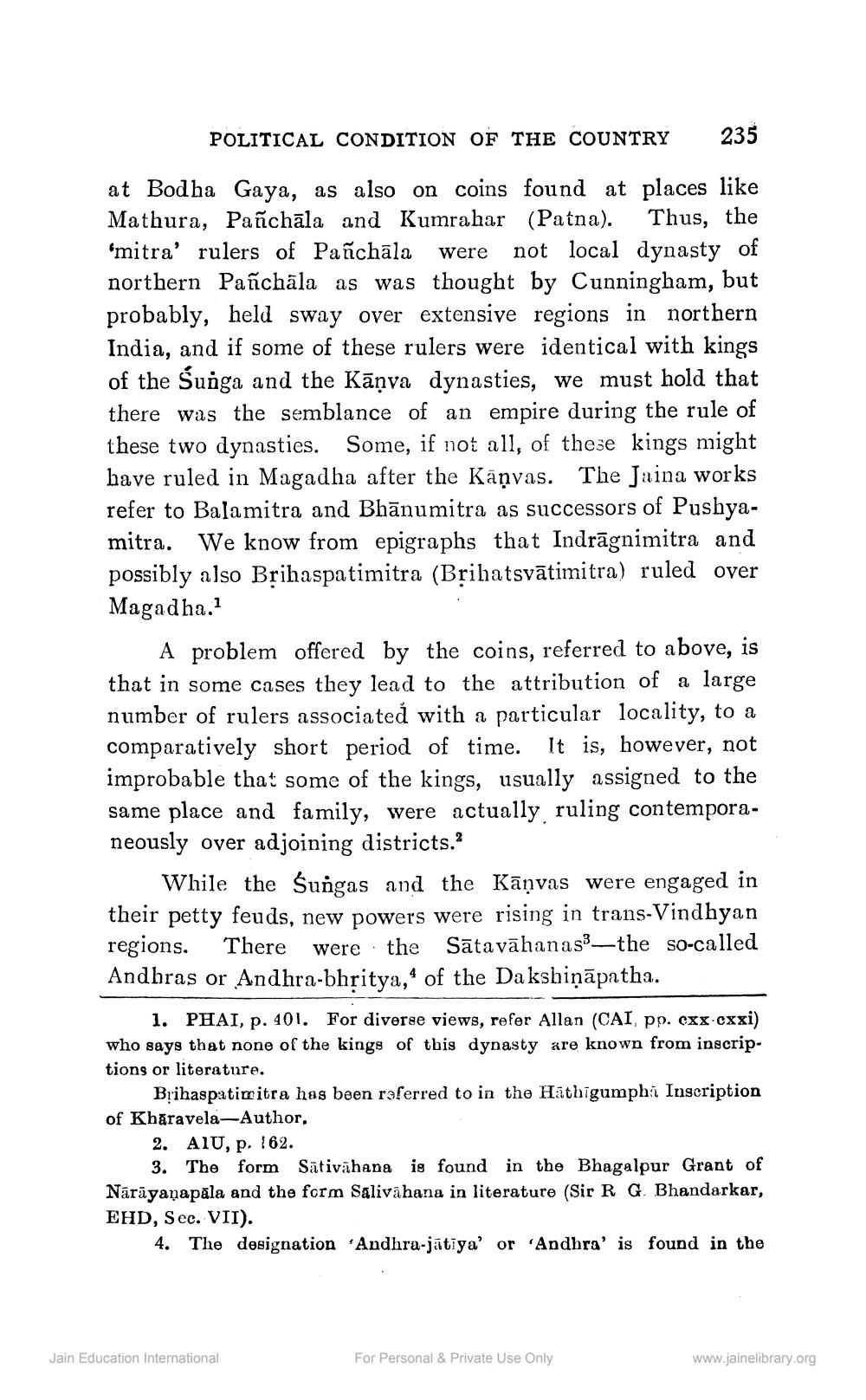________________
POLITICAL CONDITION OF THE COUNTRY 235 at Bodha Gaya, as also on coins found at places like Mathura, Pañchāla and Kumrahar (Patna). Thus, the 'mitra' rulers of Panchāla were not local dynasty of northern Pañchāla as was thought by Cunningham, but probably, held sway over extensive regions in northern India, and if some of these rulers were identical with kings of the Sunga and the Kāņva dynasties, we must hold that there was the semblance of an empire during the rule of these two dynasties. Some, if not all, of these kings might have ruled in Magadha after the Kāņvas. The Jaina works refer to Balamitra and Bhānumitra as successors of Pushyamitra. We know from epigraphs that Indrāgnimitra and possibly also Brihaspatimitra (Bșihatsvātimitra) ruled over Magadha.?
A problem offered by the coins, referred to above, is that in some cases they lead to the attribution of a large number of rulers associated with a particular locality, to a comparatively short period of time. It is, however, not improbable that some of the kings, usually assigned to the same place and family, were actually ruling contemporaneously over adjoining districts.?
While the Sungas and the Kāņvas were engaged in their petty feuds, new powers were rising in trans-Vindhyan regions. There were the Sātavāhanas--the so-called Andhras or Andhra-bhritya, 4 of the Dakshiņāpatha.
1. PHAI, p. 401. For diverse views, refer Allan (CAI, pp. cxx cxxi) who says that none of the kings of this dynasty are known from inscriptions or literature.
Brihaspatimitra has been rəferred to in the Hathigumphi Inscription of Khāravela–Author,
2. AIU, p. 162.
3. The form Sātivāhana is found in the Bhagalpur Grant of Nārāyaṇapāla and the form Salivāhana in literature (Sir R G. Bhandarkar, EHD, Sec. VII).
4. The designation "Andhra-jātīga' or 'Andhra' is found in the
Jain Education International
For Personal & Private Use Only
www.jainelibrary.org




